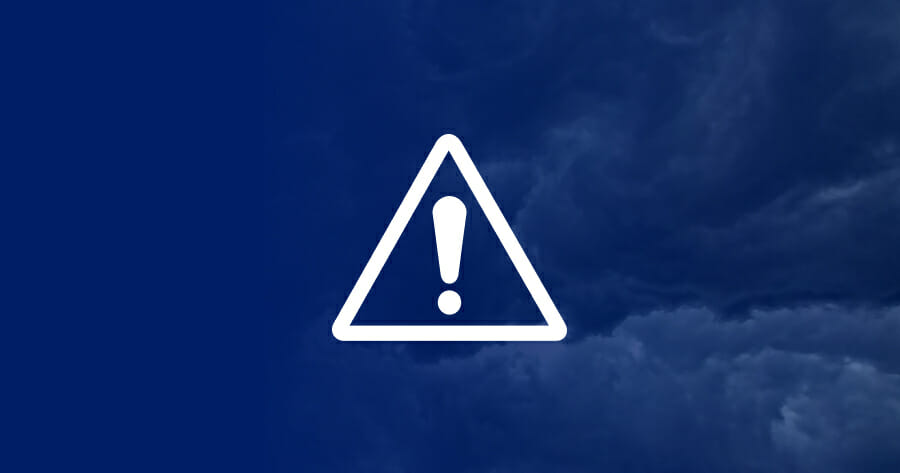Crises and calamities are unfortunate constants. But, so too are the helpers. Time and again, no matter the event, communities have rallied together to respond to these hardships. We’ve seen this throughout the COVID-19 pandemic, and we’re seeing it now with the events in Kentucky. These community leaders play a vital role in helping areas react, regroup, and rebuild.
During, and particularly following, a time of crisis, community financial institutions are the ones who need to make their voices heard the most. Customers already look to you as leaders in the area. Your organization is uniquely positioned to help answer the most common question following disasters: “How will I rebuild?” Provide the answers customers are looking for, and you will truly embed your organization into the fabric of your community. Here’s how:
Have Plans in Place
There’s the old adage, “plans are worthless; but, planning is everything.” We all know that it’s a matter of when, not if, our communities are affected by a crisis. The more you and your organization begin to plan and anticipate these events, the better prepared you will be for when they happen. From natural disasters to unforeseen events (looking at you COVID-19), try to have as many plans in place as possible. The Small Business Administration offers a variety of different resources and insights to help your organization.
Pro Tip: Educate your staff on your disaster plans. It does your organization no good to have these tucked away, collecting dust. As the saying goes, “use it, or lose it.”
Create Checklists
A key element of every disaster preparedness plan is to create checklists. No two disasters are the same – each will require a different response. Having actionable items will help staff respond more quickly (and accurately) to these events. Be operational and prepared to serve.
Internally, be sure to let staff know how to be informed and specifically who is communicating. Assign a spokesperson or multiple and make sure they know simple steps to be informed. We recommend following the following checklist when working through a disaster response
Listen – understand what is going on
Operate – figure out what’s needed and design efficient workflows to achieve it
Communicate – deliver and maintain consistent messaging
Assist – show how you are helping and provide opportunities for others to get involved
Learn – show empathy, humility, and compassion.
Separate out your checklist into Internal and External strategies to help your team to help tell the same story that you are broadcasting through the media, including social media.
Internal Communication |
External Communication |
|
Listen |
Delegate one member of your team to collect information and disseminate details to your team | Ask your followers to share what they know with you. The more informed you are, the better you are able to help |
Operate |
Keep your staff updated on your efforts and what they need to communicate externally | Broadcast authentically what members in the community need to do to interact with you. Promote a special landing page on your website or push updates to your digital listings |
Communicate |
Establish a communication chain and one (or several) spokespeople to share information | Let customers and your community know how you would like to receive their information and support |
Assist |
Let staff know how you are solving problems and invite them to contribute their ideas and input | Communicate with empathy. Who are you serving and how is it going to make an impact? |
Learn |
Review and revise your processes based on the lessons you learned so that you are better prepared to assist and handle emergency situations in the future | Communicate your lessons learned and showcase members who stepped up, made a difference, and how others can, too |
Pro Tip: Rehearse and revise these checklists while you have time. Your first draft may not be the best and taking the time to work through these checklists can sometimes turn out to be the key difference.
Communicate
During a crisis, expect your customers and community members to be lost, confused, and looking for answers. Let your community know that you are in the know and listening for updates. As we mentioned earlier, your financial brand is uniquely positioned to rally the community. Have content ready that helps answer some of the most pressing questions, including:
- What areas/services are affected?
- What should people in the community do?
- Where should those who are displaced go for help?
- How can you get access to financial resources?
- How can volunteers go to help?
- What can you do to help?
Broadcast truthfully what customers need to do to interact with you. Is there an alternative path (like a website) for them to take instead of calling or are branch locations closed?
Pro Tip: Keep the content agile and flexible so that you can quickly add or edit key details as needed. Doing so helps to ensure both the accuracy and value of your content and processes.
Organizations such as ICBA also provide marketing toolkits that provide great resources in the event of a disaster.
Social Assurance is invested into the success of financial brands and their local communities. The best of us comes out when we rally together through hardships and difficulties. As leaders in the community, financial brands are the ones who need to make their voices heard. For more insights and guidance into what your financial brand can do, reach out to Social Assurance.


